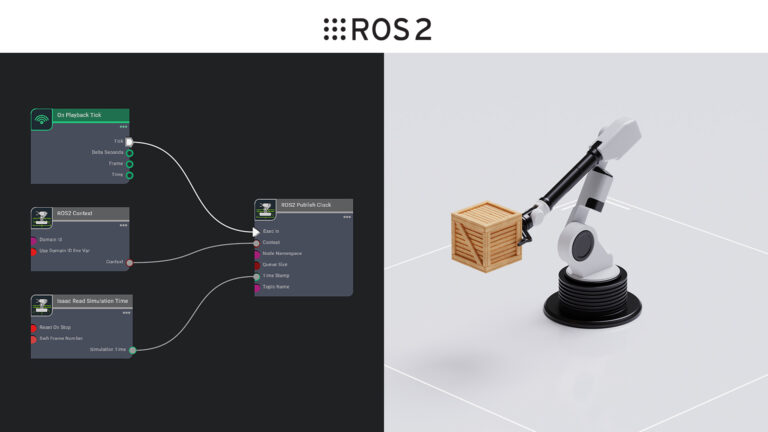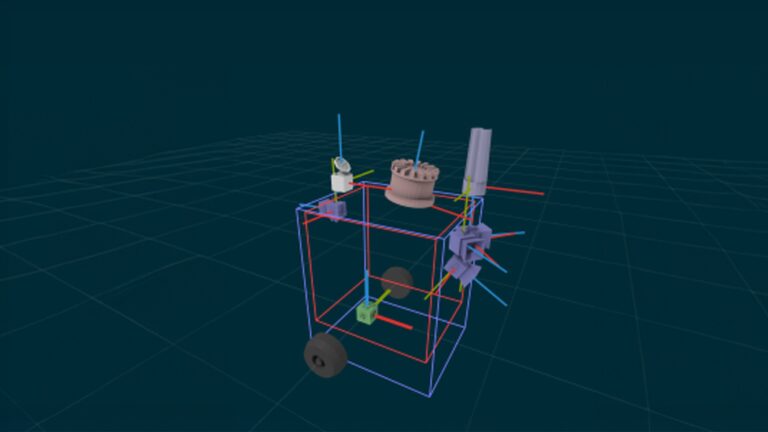What Is Agentic AI?
AI chatbots use generative AI to provide responses based on a single interaction. A person makes a query and the chatbot uses natural language processing to reply. The next frontier of artificial intelligence is agentic AI, which uses sophisticated reasoning and iterative planning to autonomously solve complex, multi-step problems. And it’s set to enhance productivity
Read Article
 Physical AI-powered robots need to autonomously sense, plan, and perform complex tasks in the physical world. These include transporting and manipulating…
Physical AI-powered robots need to autonomously sense, plan, and perform complex tasks in the physical world. These include transporting and manipulating…
Physical AI-powered robots need to autonomously sense, plan, and perform complex tasks in the physical world. These include transporting and manipulating objects safely and efficiently in dynamic and unpredictable environments. Robot simulation enables developers to train, simulate, and validate these advanced systems through virtual robot learning and testing. It all happens in physics…
 Multimodal sensor calibration is critical for achieving sensor fusion for robotics, autonomous vehicles, mapping, and other perception-driven applications….
Multimodal sensor calibration is critical for achieving sensor fusion for robotics, autonomous vehicles, mapping, and other perception-driven applications….
Multimodal sensor calibration is critical for achieving sensor fusion for robotics, autonomous vehicles, mapping, and other perception-driven applications. Traditional calibration methods, which rely on structured environments with checkerboards or targets, are complex, expensive, time-consuming, and don’t scale. An automatic sensor calibration solution that simplifies the calibration…
At ROSCon in Odense, one of Denmark’s oldest cities and a hub of automation, NVIDIA and its robotics ecosystem partners announced generative AI tools ,simulation, and perception workflows for Robot Operating System (ROS) developers. Among the reveals were new generative AI nodes and workflows for ROS developers deploying to the NVIDIA Jetson platform for edge
Read Article
The NVIDIA AI Summit India, taking place October 23–25 at the Jio World Convention Centre in Mumbai, will bring together the brightest minds to explore how India is tackling the world’s grand challenges. A major highlight: a fireside chat with NVIDIA founder and CEO Jensen Huang on October 24. He’ll share his insights on AI’s
Read Article
 Today, IBM released the third generation of IBM Granite, a collection of open language models and complementary tools. Prior generations of Granite focused on…
Today, IBM released the third generation of IBM Granite, a collection of open language models and complementary tools. Prior generations of Granite focused on…
Today, IBM released the third generation of IBM Granite, a collection of open language models and complementary tools. Prior generations of Granite focused on domain-specific use cases; the latest IBM Granite models meet or exceed the performance of leading similarly sized open models across both academic and enterprise benchmarks. The developer-friendly Granite 3.0 generative AI models are…
NVIDIA is expanding its collaboration with Microsoft to support global AI startups across industries — with an initial focus on healthcare and life sciences companies. Announced today at the HLTH healthcare innovation conference, the initiative connects the startup ecosystem by bringing together the NVIDIA Inception global program for cutting-edge startups and Microsoft for Startups to
Read Article
